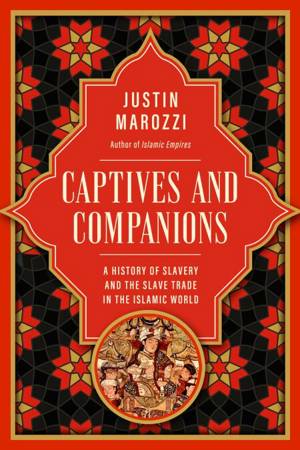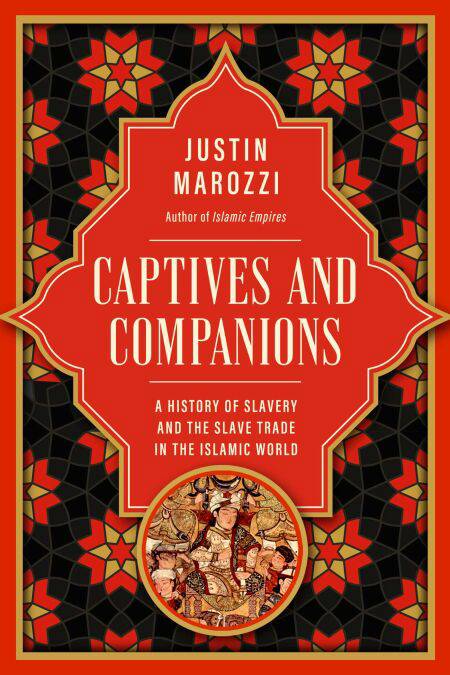
- Afhalen na 1 uur in een winkel met voorraad
- Gratis thuislevering in België vanaf € 30
- Ruim aanbod met 7 miljoen producten
- Afhalen na 1 uur in een winkel met voorraad
- Gratis thuislevering in België vanaf € 30
- Ruim aanbod met 7 miljoen producten
Zoeken
Captives and Companions E-BOOK
A History of Slavery and the Slave Trade in the Islamic World
Justin Marozzi
E-book | Engels
€ 22,36
+ 22 punten
Omschrijving
The definitive history of the slave trade in the Islamic world—a story that has been overshadowed by its notorious, but shorter-lived, Atlantic counterpart.
Slavery in the Islamic world has a long, complex, and controversial history. In the earliest days of Islam, Arab Muslims enslaved men, women and children as the spoils of war. In the following centuries, young boys were imported to imperial Islamic courts in enormous numbers. Some were castrated to serve as eunuch guardians of sacred spaces, from the imperial harem of Istanbul to the Prophet’s Mosque in Medina. Others were "harvested" by the Ottomans to serve as Janissaries, the sultan’s elite infantry unit. Some even rose to the highest levels of political and military command, making a mockery of their slave status. For wom leading concubines became powerful figures in their own right. In the ninth-century Golden Age of Baghdad, the most beautiful and accomplished courtesans were among the richest, most celebrated figures of their day. In the twentieth century, more than a thousand years later, their cosmopolitan counterparts were still entertaining Ottoman sultans.
Yet it was Africa which bore the brunt of the Islamic world’s insatiable demand for slave labour. Slavers plied its Mediterranean, Atlantic and Indian Ocean coasts, traders raided inland for human cargo, and millions of enslaved Africans trudged across the Sahara into captivity. Meanwhile, North African corsairs turned the Mediterranean into a slaving free-for-all between Muslims, Christians and Jews.
The sheer longevity of slavery was no less surprising. Arab Muslims adapted and regulated this practice within an Islamic context. Sanctioned by the Prophet Mohammed, legitimated by the Quran and holy law, slavery endured for fifteen centuries. Abolition had few champions and came late in the day—hereditary slavery continues even today in Mali and Mauritania. Captives and Companions takes the reader on an extraordinary historical journey across deserts, continents and oceans, from Baghdad to Bamako, Tripoli to Timbuktu, Istanbul to the Black Sea, and reveals a hidden but vital chapter in our understanding of world civilization.
Slavery in the Islamic world has a long, complex, and controversial history. In the earliest days of Islam, Arab Muslims enslaved men, women and children as the spoils of war. In the following centuries, young boys were imported to imperial Islamic courts in enormous numbers. Some were castrated to serve as eunuch guardians of sacred spaces, from the imperial harem of Istanbul to the Prophet’s Mosque in Medina. Others were "harvested" by the Ottomans to serve as Janissaries, the sultan’s elite infantry unit. Some even rose to the highest levels of political and military command, making a mockery of their slave status. For wom leading concubines became powerful figures in their own right. In the ninth-century Golden Age of Baghdad, the most beautiful and accomplished courtesans were among the richest, most celebrated figures of their day. In the twentieth century, more than a thousand years later, their cosmopolitan counterparts were still entertaining Ottoman sultans.
Yet it was Africa which bore the brunt of the Islamic world’s insatiable demand for slave labour. Slavers plied its Mediterranean, Atlantic and Indian Ocean coasts, traders raided inland for human cargo, and millions of enslaved Africans trudged across the Sahara into captivity. Meanwhile, North African corsairs turned the Mediterranean into a slaving free-for-all between Muslims, Christians and Jews.
The sheer longevity of slavery was no less surprising. Arab Muslims adapted and regulated this practice within an Islamic context. Sanctioned by the Prophet Mohammed, legitimated by the Quran and holy law, slavery endured for fifteen centuries. Abolition had few champions and came late in the day—hereditary slavery continues even today in Mali and Mauritania. Captives and Companions takes the reader on an extraordinary historical journey across deserts, continents and oceans, from Baghdad to Bamako, Tripoli to Timbuktu, Istanbul to the Black Sea, and reveals a hidden but vital chapter in our understanding of world civilization.
Specificaties
Betrokkenen
- Auteur(s):
- Uitgeverij:
Inhoud
- Aantal bladzijden:
- 400
- Taal:
- Engels
Eigenschappen
- Productcode (EAN):
- 9781639369744
- Verschijningsdatum:
- 6/10/2025
- Uitvoering:
- E-book
- Beveiligd met:
- Adobe DRM
- Formaat:
- ePub

Alleen bij Standaard Boekhandel
+ 22 punten op je klantenkaart van Standaard Boekhandel
Beoordelingen
We publiceren alleen reviews die voldoen aan de voorwaarden voor reviews. Bekijk onze voorwaarden voor reviews.











